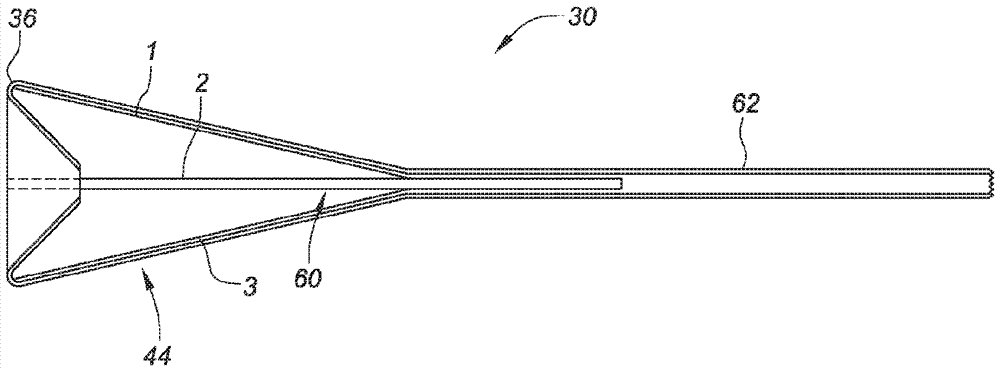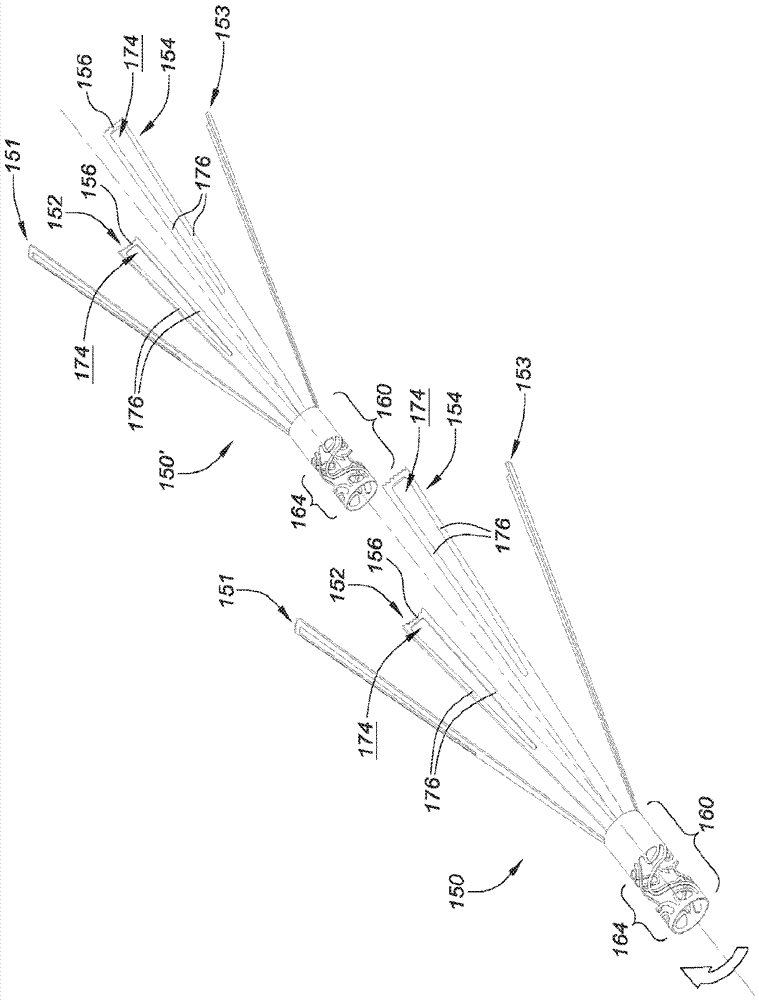Ivc filter retrieval systems with interposed support members
A technology of supporting member and supporting element, applied in the direction of filters in blood vessels, medical devices, stents, etc., can solve the problems of chaotic filter orientation and difficulty in recapturing, etc.
- Summary
- Abstract
- Description
- Claims
- Application Information
AI Technical Summary
Problems solved by technology
Method used
Image
Examples
Embodiment Construction
[0027] Various exemplary embodiments are described below. Reference is made to these examples in a non-limiting sense, as it should be noted that these examples are provided to illustrate the broader application aspects of the devices, systems and methods. Various modifications may be made to these embodiments and equivalents may be substituted without departing from the true spirit and scope of the various embodiments. In addition, many modifications may be made to adapt a particular situation, material, composition of matter, process, process action(s) or step(s) to the objective(s), spirit or scope of the invention. All such modifications are intended to come within the scope of what is claimed herein.
[0028] Before the present subject matter is described in detail, it is to be understood that this disclosure is not limited to particular example embodiments described, as such may, of course, vary. It is also to be understood that the terminology used herein is for the p...
PUM
 Login to View More
Login to View More Abstract
Description
Claims
Application Information
 Login to View More
Login to View More - R&D
- Intellectual Property
- Life Sciences
- Materials
- Tech Scout
- Unparalleled Data Quality
- Higher Quality Content
- 60% Fewer Hallucinations
Browse by: Latest US Patents, China's latest patents, Technical Efficacy Thesaurus, Application Domain, Technology Topic, Popular Technical Reports.
© 2025 PatSnap. All rights reserved.Legal|Privacy policy|Modern Slavery Act Transparency Statement|Sitemap|About US| Contact US: help@patsnap.com



